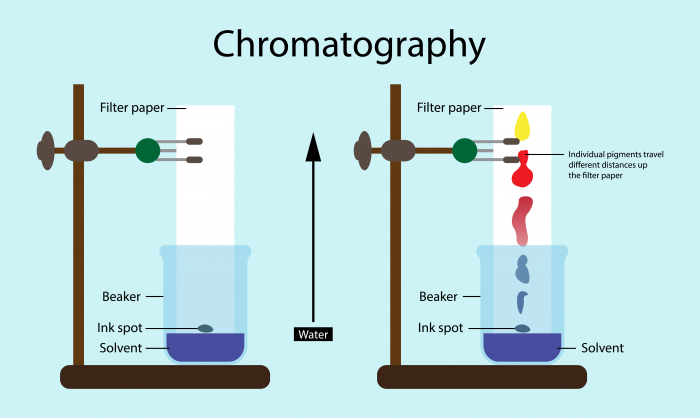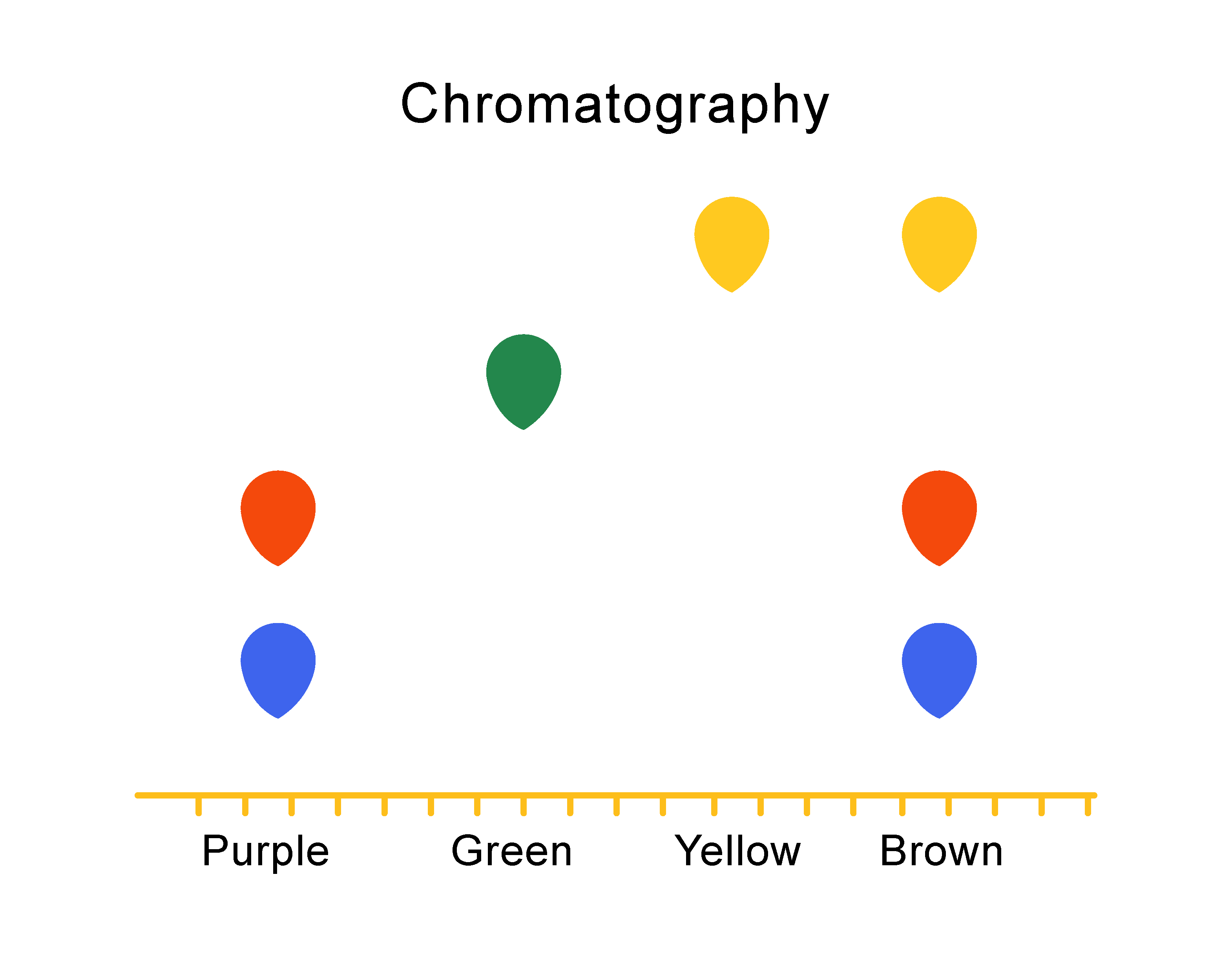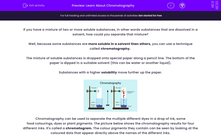If you have a mixture of two or more soluble substances, in other words substances that are dissolved in a solvent, how could you separate that mixture?
Well, because some substances are more soluble in a solvent than others, you can use a technique called chromatography.
The mixture of soluble substances is dropped onto special paper along a pencil line. The bottom of the paper is dipped in a suitable solvent (this can be water or another liquid).
Substances with a higher solubility move further up the paper.

Chromatography can be used to separate the multiple different dyes in a drop of ink, some food colourings, dyes or plant pigments. The picture below shows the chromatography results for four different inks. It's called a chromatogram. The colour pigments they contain can be seen by looking at the coloured dots that appear directly above the names of the different inks.

A mixture will separate into more than one spot, in a vertical column. The higher the spot, the more soluble the substance. By matching the colour and height of the spots, you can identify the pigments which are present in the mixture.
So you can see that the brown ink is actually made up of three colours - blue, yellow and red!
Let's get started on interpreting some chromatograms!








